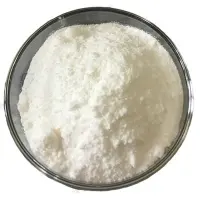-
Categories
-
Pharmaceutical Intermediates
-
Active Pharmaceutical Ingredients
-
Food Additives
- Industrial Coatings
- Agrochemicals
- Dyes and Pigments
- Surfactant
- Flavors and Fragrances
- Chemical Reagents
- Catalyst and Auxiliary
- Natural Products
- Inorganic Chemistry
-
Organic Chemistry
-
Biochemical Engineering
- Analytical Chemistry
-
Cosmetic Ingredient
- Water Treatment Chemical
-
Pharmaceutical Intermediates
Promotion
ECHEMI Mall
Wholesale
Weekly Price
Exhibition
News
-
Trade Service
iNature
With persistent mutations in the Omicron variant of severe acute respiratory syndrome coronavirus 2 (SARS-CoV-2), many new Omicron sublines have been reported to escape neutralizing antibodies caused by inoculation and infection, including BA.
2, BA.
2.
12.
1, BA.
4, and BA.
5
.
Recently, another emerging sublineage, BA.
2.
75, has been reported in several countries, which carries 9 additional mutations
compared to BA.
2.
Previous studies have shown that both homologous and heterologous enhancers significantly reduce the escape of Omicron BA.
1, BA.
1.
1, BA.
2, and BA.
3 neutralizing antibodies, but there is still a lack of enhanced vaccines or breakthrough infectious serums to fully assess
the neutrality of all different emerging Omicron sublines.
On October 13, 2022, Pengfei Wang, Wenhong Zhang, Zixin Hu of Fudan University and Chenqi Xu of the Shanghai Institute of Biochemistry and Cell Biology, Chinese Academy of Sciences jointly published an online publication entitled " Neutralization of Omicron BA.
4/BA.
5 and BA.
2.
75 by booster vaccination or BA.
2 breakthrough infection sera", which showed that all Omicron sublines exhibited massive escape of vaccine-induced neutralizing antibodies, with BA.
4/5 being the most significant
。
2-based PsVs, including BA.
2.
3.
1, BA.
2.
10.
1, BA.
2.
12.
1, BA.
2.
13, BA.
2.
75, and BA.
4/BA.
5
。 Some of these Omicron subtypes share the same spike protein as many other sublines that evolved from BA.
1, BA.
2, or BA.
5, so the study mapped the virus that could represent the neutralization escape levels of more Omicron isoforms (Figure 1).
The Delta (B.
1.
617.
2) variant was also included in the study
as it was recently replaced by Omicron.
This is the most comprehensive Omicron sublineage detection map
available.
Figure 1.
Prevalence and peak mutations of the Omicron sublineage and Delta variants (Figure from Cell Discovery) The researchers collected serum samples from healthy adults on day 14, used a homologous enhancer of BBIBP-CorV or a heterologous enhancer of ZF2001, and tested their neutralizing activity
on this group of PsVs 。 The results showed that the homology enhancer group (3× BBIBP, n = 10) showed a geometric mean titer (GMT) of 278 for wild-type (WT, D614G), and a 2.
1-8.
4-fold
decrease in neutralization titer for Delta and Omicron sublineages.
In addition, BA.
2.
75 has more mutations in the N-terminal domain compared to BA.
4/5, but two key mutations (L452R and F486V) are missing in the receptor-binding domain (RBD).
Thus, although BA.
2.
75 accumulates the largest amount in its mutations, BA.
4/5 shows the strongest serum escape
in both homologous and heterogenic enhancement groups.
The SARS-CoV-2 BA.
2 variant is causing an increasing number of breakthrough infections
in China.
To learn more about their chances of being re-infected by the new Omicron subline, the researchers recruited 12 people who were infected with Omicron BA.
2 Recovered patients who had previously received three doses of inactivated vaccine and had their serum samples
evaluated on day 14 after infection with the same group of PsVs.
BA.
2 breakthrough infection was found to significantly increase neutralizing antibody titers against WT, B.
1.
617.
2, BA.
1, BA.
1.
1, BA.
3, BA.
2.
3.
1, BA.
2.
10.
1, BA.
2.
12.
1, BA.
2.
13, BA.
2.
75 and BA.
4/5 (Figure 2).
For BA.
2 and its derived variants and BA.
4/5, the breakthrough infection group had a lower level of reduction compared to WT than in the homologous and heterologous vaccine booster groups
.
For Delta, BA.
1, BA.
1.
1 and BA.
3, the reduction level is much higher, which may be related
to the difference in antigenicity of Omicron BA.
2 with other variants.
Figure 2.
Individual serum neutralization GMT collected on day 14 after BBIBP-CorV homologous booster or BBIBP-CorV heterologous booster ZF001 (Figure from Cell Discovery) More importantly, the study found that BA.
2 breakthrough infection significantly increased neutralizing antibody titers to relatively high levels compared to homologous and heterologous booster vaccines against almost all variants (Figure 3).
。 Figure 3.
Parallel comparison of the neutralization titer of individual serum against different SARS-CoV-2 variants collected on day 14 after vaccination with a homologous or heterologous booster vaccine or BA.
2 virus breakthrough infection (Figure from Cell Discovery) In summary, the results of this study show that all Omicron sublines exhibit massive escape of vaccine-induced neutralizing antibodies, with BA.
4/5 being the most significant
。 However, BA.
2 breakthrough infection can significantly increase the neutralizing antibody titer for all different variants, especially BA.
2 and its derived sublines
.
Original link: style="margin-right: auto;margin-left: auto;outline: 0px;width: 30px;display: inline-block;">
—END—
The content is 【iNature】







